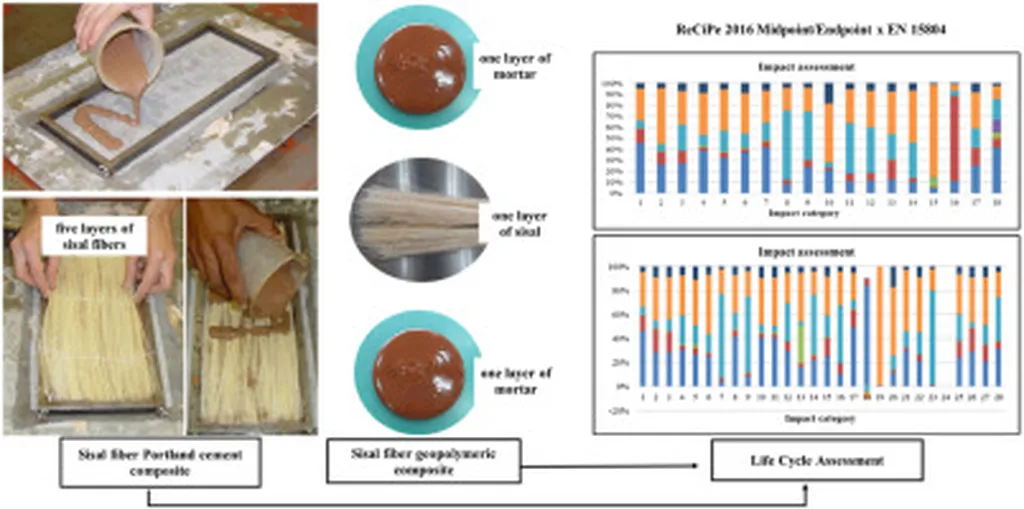In the quest for sustainable construction materials, a groundbreaking study led by Henian Zhang from the School of Civil Engineering has unveiled the remarkable potential of sisal fiber reinforcement in activated magnesia oxide carbonized raw soil blocks. Published in the esteemed journal *Advances in Materials Science and Engineering* (translated as *Advances in Materials Science and Engineering*), this research could revolutionize the energy sector by offering eco-friendly alternatives to traditional building materials.
The study delves into the toughening mechanisms and key influencing factors of sisal fiber reinforcement in activated magnesia oxide carbonized soil. By conducting splitting tensile and compressive tests on blocks with varying lengths and contents of sisal fibers, Zhang and his team uncovered fascinating insights. “The relationship between sisal content and tensile strength exhibited a ‘double-peaked’ pattern, with peaks at 1% and 3% fiber content,” Zhang explained. This finding suggests that there is an optimal range for sisal fiber content to maximize tensile strength, offering a precise guide for future applications.
One of the most striking discoveries was the significant increase in tensile strength when sisal fibers were incorporated. After 9 days of carbonation, blocks with 3% sisal fibers showed an impressive 186.08% increase in tensile strength compared to fiber-free samples. This enhancement not only highlights the potential for stronger, more durable construction materials but also underscores the environmental benefits of using natural fibers.
The study also revealed that the relationship between sisal length and tensile strength followed a “triple-peaked” curve, with peaks at 5, 15, and 30 mm. When 1% of 30 mm sisal fibers were used, the tensile strength increased by 154.21% compared to the fiber-free variant and by 732.8% compared to conventional raw soil. These findings suggest that both the length and content of sisal fibers play crucial roles in enhancing material properties, providing a roadmap for optimizing the use of natural fibers in construction.
Zhang’s research also identified the strength of relationships among various influencing factors on the material’s toughening effects. The gray relational analysis conducted in the study revealed that the influence of sisal fiber content on toughening was greater than that of fiber length, which in turn was greater than that of carbonation time. This insight could guide manufacturers in prioritizing the most effective strategies for enhancing material toughness.
The implications of this research are far-reaching, particularly for the energy sector. As the world shifts towards sustainable and eco-friendly construction practices, the use of sisal-reinforced activated magnesia oxide carbonized raw soil blocks could significantly reduce the carbon footprint of buildings. “This material not only offers enhanced strength and durability but also aligns with the growing demand for green building solutions,” Zhang noted.
The study’s findings could shape future developments in the field by encouraging further research into natural fiber reinforcement and sustainable construction materials. As the construction industry continues to evolve, the integration of eco-friendly materials like sisal-reinforced soil blocks could become a standard practice, driving innovation and sustainability in the energy sector.
In conclusion, Henian Zhang’s research published in *Advances in Materials Science and Engineering* offers a compelling case for the use of sisal fiber reinforcement in activated magnesia oxide carbonized raw soil blocks. By providing a detailed analysis of the toughening mechanisms and key influencing factors, this study paves the way for more sustainable and durable construction materials, ultimately contributing to a greener future.

